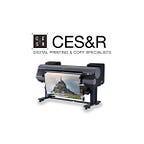6 Color vs 8 Color vs 12 Color Printing
Printing has come a long way in the last few decades. Anybody who has a printer is probably familiar with the most typical color printing format: 4-color printing. 4-color printing uses exactly what’s called the CMYK color model of Cyan, Magenta, Yellow, and Key (i.e. black) inks. Nevertheless, CMYK likewise depends upon the paper it’s printed on to really achieve a continuous spectrum of colors through a process called halftoning.
Halftoning allows for less than complete saturation of the main colors; small dots of each main color are printed in a pattern small enough that people view a strong color. Magenta printed with a 20% halftone, for example, produces a pink color, because the eye views the tiny magenta dots on the white paper background as lighter and less saturated than the color of pure magenta ink.
Without halftoning, 4-color printing might produce just seven colors: the three primaries themselves (cyan, magenta, and yellow), plus 3 secondary colors produced by layering 2 of the primaries (red, green, and blue) plus matte black. With halftoning, a complete continuous series of colors can be produced. Nonetheless, the range is really narrow in contrast to the actual color spectrum. Consequently, other printing procedures have likewise been invented such as 6-color printers, 8-color printers, and 12-color printers.
6 Color Printers
Originated in 1998 by Pantone Inc under the name Hexachrome, 6-color printing included orange and green inks to the conventional (and still the most common setup) CMYK. The additional 2 inks broaden the color range for better color recreation. It was for that reason also called a CMYKOG (Cyan, Magenta, Yellow, Key, Orange, Green) procedure. Hexachrome was stopped by Pantone in 2008 when Adobe Systems stopped supporting their HexWare plugin software application, however other business have continued to offer 6 printer, albeit under the generic name rather than the trademarked “Hexachrome.”
However, Hexachrome was very challenging to adjust properly (which is why it needed the HexWare plugin to begin with), so some 6-color printers rather use a CcMmYK procedure of adding a light cyan and a light magenta to widen the color gamut of the middle tone area, which helps enhance the appearance of blue skies and several complexion.
8 Color Printers
Even with 6 colors, though, printing in big formats still suffers from granularity and 6-color printing is typically tough to adjust (if utilizing CMYKOG) or uses more ink (for the CcMmYK process) in order to render darker colors. In an effort to resolve these problems, along with improve the color range even further, 8-color printing was developed.
8-color printing is an expansion of the CcMmYK procedure, this time adding light yellow and “light black” (i.e. gray) to create a CcMmYyKk process. On the entire, 8-color printing achieves a couple of clear wins:.
- Boosts evident resolution.
- Produces finer details.
- Guarantees smoother gradient transitions.
- Produces vivid and crisp colors.
- Decreases graininess.
However, it also prints slower.
12 Color Printers
12-color printing is the most photorealistic choice, especially for large-format printing. The 12-color procedure takes the CcMmYK process and includes a shiny black (in contrast to the K black, which is matte) and an unique color “enhancer” (which is usually a kind of gloss) to enhance the look of every print. The staying colors differ depending upon the manufacturer, however in all, 12-color printing broadens on the CcMmYK color gamut by over 80%!
